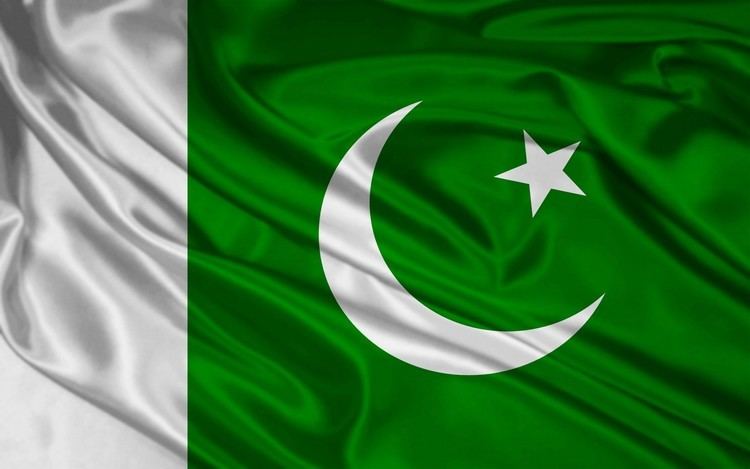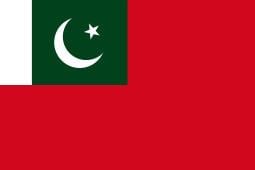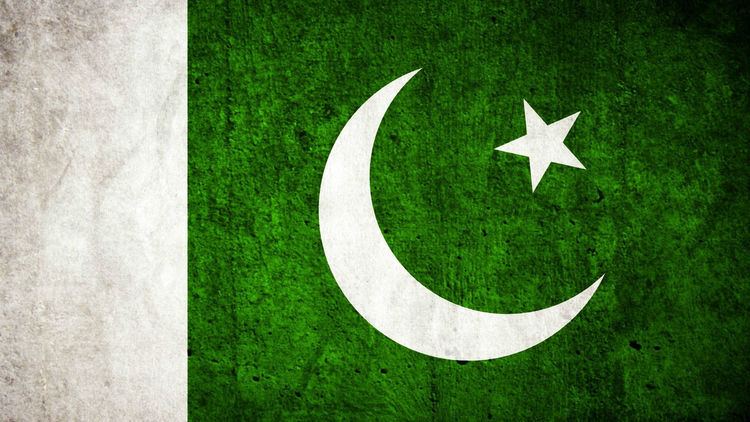Proportion 2:3 Country Pakistan | Adopted on 11 August 1947 Designed by Syed Amir-uddin Kedwaii | |
Name Parc̱am-e Sitārah o-Hilāl (Flag of the Crescent and Star) | ||
How to draw the national flag of pakistan toffeetv com
The national flag of Pakistan (Urdu: قومی پرچم, Qaumī Pārc̱am) was adopted in its present form during a meeting of the Constituent Assembly on August 11, 1947, just four days before the country's independence, when it became the official flag of the Dominion of Pakistan. It was afterwards retained by the current-day Islamic Republic of Pakistan. The flag is a green field with a white crescent moon and five-rayed star at its centre, and a vertical white stripe at the hoist side. Though the green colour is mandated only as 'dark green', its official and most consistent representation is Pakistan green, which is shaded distinctively darker. The flag was designed by Amiruddin Kidwai, and is based on the All-India Muslim League flag.
Contents
- How to draw the national flag of pakistan toffeetv com
- History and symbolism
- Design
- Dimensions
- National flag protocols
- Use by public officials
- Milestones
- Similar flags
- References

The flag is referred to in the national anthem as the Flag of the Crescent and Star. It is flown on several important days of the year including Republic Day, Independence Day and Defence Day. It is often hoisted every morning at schools, offices and government buildings to the sound of the national anthem and lowered again before sunset. A notable flag raising and lowering ceremony is carried out each day with great pomp and enthusiasm at the Wagah Border attended by hundreds of spectators. A designer named Amiruddin Kidwai studied the League’s flag, as he tried to design a flag for a new, independent nation. Finally he arrived at a design, and he presented it to the leadership of the Muslim League who subsequently adopted his design as the flag of the Dominion of Pakistan on 11 August, 1947. The government of Pakistan has pronounced rules about the flying of the flag. It is to be displayed at full mast on 23 March of each year, marking the adoption of the Lahore Resolution in 1940 and the Declaration of the Republic of Pakistan in 1956, and on 14 August in celebration of Independence Day, when Pakistan was carved out from British India as a home for Indian Muslims.
History and symbolism

Before the Second World War, Muslims and Hindus lived together under the British Raj. A number of the Muslims formed the All India Muslim League. After the Second World War, when the independence of Pakistan in 1947, the flag of the Muslim League served as the basis for the flag of Pakistan.

The green represents Islam and the majority Muslims in Pakistan and the white stripe represents religious minorities and minority religions. In the centre, the crescent and star symbolizes progress and light respectively. The flag symbolizes Pakistan's commitment to Islam and the rights of religious minorities. It is based on the original flag of the Muslim League, which itself drew inspiration from the flag of the Sultanate of Delhi, the flag of Ottoman Empire and the Flag of the Mughal Empire.
Design

The official design of the national flag was adopted by the Constituent Assembly together with a definition of the features and proportions.

According to the specifications it is a dark green rectangular flag in the proportion of length [A] and width [B] as 3:2 with a white vertical bar at the mast, the green portion bearing a white crescent in the centre and a five-pointed white heraldic star. The width of the white portion [C] is one quarter the width of the flag [A], nearest the mast, so the green portion occupies the remaining three quarters [D].
Dimensions
The Interior Ministry of Pakistan provides dimensions for flags in different circumstances:
National flag protocols
Use by public officials
The use of the national flag is regulated by the Pakistan Flag Rules, which were introduced in 2002 by Prime Minister Zafarullah Khan Jamali. The Rules are not available online but there have been instances of misuse such as officials using flags on their vehicles when they are not entitled to do so. The national flag is flown on the official residences and vehicles (cars, boats, planes) of the following public officials:
